Although details of individuals are only available from the 1841 to 1921 censuses, a summary of population size and number of households is given on the ‘A Vision of Britain through Time’ web-site. Using this source, information from 1801 to 1961 (excluding 1941, when a census was not taken) can be given.
The population of Wickhamford was remarkably stable from 1801 to 1891 and then increased steadily as labour consuming market gardening took over many of the village fields from general agriculture. The largest increase occurred between 1901 and 1911, when a number of new houses were built to accommodate the rising population. A second housing boom took place between 1951 and 1961, when the population increased by over 100 in that decade. The details of these changes are given in Table 1.
Table 1 – Population of Wickhamford from 1801 to 1961
|
Census Year |
No. of households |
Population |
|---|---|---|
|
1801 |
- |
125 |
|
1811 |
- |
137 |
|
1821 |
- |
130 |
|
1831 |
- |
136 |
|
1841 |
27 |
123 |
|
1851 |
28 |
129 |
|
1861 |
28 |
124 |
|
1871 |
28 |
135 |
|
1881 |
27 |
123 |
|
1891 |
27 |
137 |
|
1901 |
33 |
171 |
|
1911 |
57 |
259 |
|
1921 |
67 |
305 |
|
1931 |
79 |
338 |
|
1941 – not taken |
[ 110* ] |
[ 388* ] |
|
1951 |
116 |
405 |
|
1961 |
167 |
522 |
* data from 1939 Register of inhabitants taken at the outbreak of War in September – see Appendix.
‘Household’ means a family living together, including lodgers, servants etc, who may occupy a whole house or part of one. In most cases in Wickhamford households did occupy a single dwelling. In most years all of the village houses were occupied but in some years there were empty properties. For example, in 1871 and 1881 there were two empty properties, in 1891 five were empty and in 1901 there were four. A depression in the agricultural industry started in the 1870s, resulting a population decline in Wickhamford by 1881, but numbers slowly increased thereafter. This was largely due to the switch to the more labour intensive market gardening work from the 1890s onward.
The average number of people per household was very similar from 1841 until 1921 at around 4.5 to 5; it then decreased to a level just above 3 by 1961.
The occupations of the working population are available from the censuses of 1841 to 1911 at present. The types of occupation in these years are given in Table 2 and reflect national changes that took place in the Victorian and Edwardian eras.
Table 2 –Main occupations of working villagers in the period 1841 to 1911, by percentage.
|
Occupation type |
1841 |
1851 |
1861 |
1871 |
1881 |
1891 |
1901 |
1911 |
|---|---|---|---|---|---|---|---|---|
|
Farmers and agricultural work |
47% |
60% |
53% |
62% |
70% |
50% |
51% |
16% |
|
Horticultural work – market gardening and fruit growing |
0 |
0 |
0 |
2% |
3% |
13% |
26% |
63% |
|
Domestic service – from charwoman to governess |
18% |
15% |
16% |
18% |
5% |
12% |
14% |
13% |
|
Silk throwsters |
9% |
0 |
0 |
0 |
0 |
0 |
0 |
0 |
|
Gloveresses |
7% |
9% |
16% |
8% |
0 |
1% |
1% |
1% |
|
Other occupations |
19% |
16% |
15% |
10% |
22% |
24% |
8% |
7% |
‘Other occupations’ included one innkeeper at each census; one to three millers; one to three wheelwrights; in the early years, a blacksmith; occasionally a dressmaker, seamstress, shopkeeper, carpenter, house painter and some profession people in the later censuses. The innkeeper, blacksmith and wheelwright roles were combined at the Sandys Arms, which had opened in 1833 and was run from at least 1841 until after the Great War by the Pethard family. The mill was in the hands of the Smith family from 1841 until late in the Great War.
The percentage of villagers working on the land, i.e. agriculture and horticulture, remained fairly constant after 1851 until 1871, but the development of market gardening from the 1880s onwards led to an increase and a change of emphasis in this area. At the 1861 census one man and a boy were described as ‘gardeners’ but it is likely that they were working as domestic gardeners at this time. They were 70-year-old James Robbins of the present Brookfield Cottage in Manor Road and 12-year-old Elisha Howse who lived in a cottage where 36 Manor Road now stands.
‘Silk throwsters’ were working in a cottage industry making silk yarn from raw fibres; their produce would have been used at the local silk mills e.g. the one in Badsey. A reduction in duties on imported foreign goods, including silk, in 1846, led to the collapse of the English silk industry. In 1841 there were eight silk throwsters working in Wickhamford – four female members of the Sharp family, living in a now demolished cottage near the present Wickham House – Ann, Charlotte, Eliza and Harriett (aged from 8 to 15), - Mary Rogers (15), Caroline Falkener (17), James Freeman (20) and 8-year-old William Cook. All had left the village by 1851.
Glove making was also a cottage industry in the early to mid 19th century, with four to six women and girls employed in this work in 1841, 1851 and 1871 and a peak of eleven in 1861. By the period 1891 to 1911 only one woman was recorded in each census as employed in this type of work. The last, in 1911 was Mary Agg, an unmarried woman of 28, who lived with her sister, Hilote Bennett and her family, at 4 Manor Road.
Domestic servants who lived in their employer’s household remained fairly regular in number from 1841 to 1871, but dropped sharply in 1881, and then recovered after that date. They worked almost exclusively at the Manor and in the village farmhouses – Field Farm, Elm Farm and Pitchers Hill Farm.
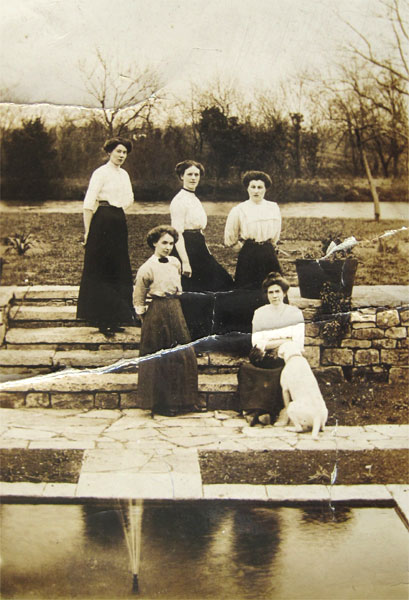
Those occupied in agriculture were the farmers themselves and their sons, farm labourers, carters, cowmen and ‘milkmen’ and, in 1911, 68-year-old James Willoughby of Brookfield Cottage was recorded as a ‘Late steam plough engine driver (not working)’ – mechanisation was arriving in the village.
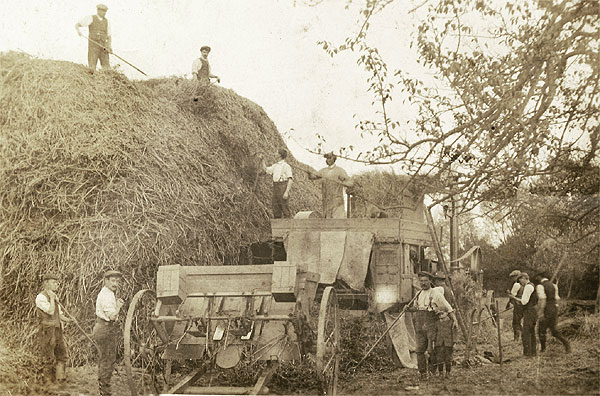
The coming of market gardening led to census recording of those employed in this area as ‘employer’, ‘working on own account’ or ‘worker’. The first market gardener was recorded in 1871 – George Edkins, aged 49, who lived in a cottage where Hodys Place now stands.
The onset of market gardening affected the housing layout of the village. In the 1840s to 1860s most of the properties (85%) were on the village street, now Manor Road, with the inn, mill, Field Farm and a cottage at Whitfurrows on the Turnpike Road. By the 1880s and 1890s a third of the houses were on the Evesham to Broadway road and by 1911 over half (55%) were located there.
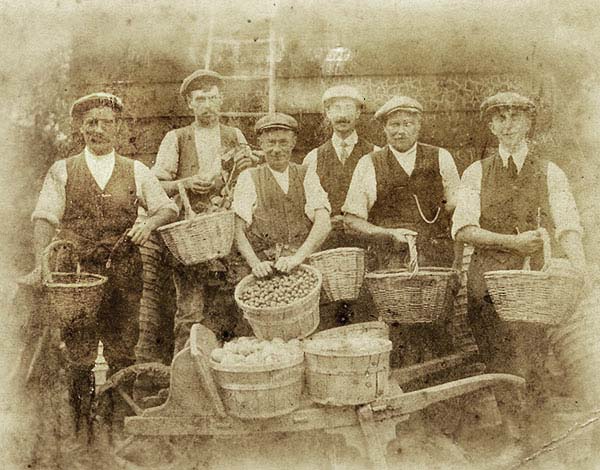
Many of the young children in the early censuses were shown to be in gainful employment. As the village children started to attend school in Badsey so the recording of ‘scholars’ took place in the censuses of 1851 to 1891. At the 1901 and 1911 censuses, it would have been assumed that all children in the age group of 4 to about 14 would have been at school. The school in Badsey opened on 1st November 1854 and compulsory education started in 1870, leading to the increase in scholars recorded in 1881. In 1911, the Head Teacher of Badsey School, Elizabeth Mason, was living in Wickhamford at Elm Farm.
Before compulsory education, many of the youngsters were involved in cottage industry or working as servants or in agriculture. In 1851, for example, some of the agricultural labourers in Wickhamford were Richard and David Winiatt (aged 13 and 11), John Bennett (11), John Sears (13) and the Tomlinson brothers, William, Joseph and David (8, 10 and 13). Reuben Andrews (15) was a servant at Elm Farm; Mary and Hannah Sears (15 and 13) and Mary Crane (9) were gloveresses.
By 1861, although the youngest two Warner children (Alfred and John, aged 9 and 6) were scholars, Charles and William (13 and 12) were employed as ‘carters boys’. In the Crane household, mentioned above, 7-year-old John was a scholar, but Thomas (10) was an ‘agricultural labourers carters boy’ and 12-year-old Eliza kept home for the family as her mother had died.
Table 3 – Number of scholars recorded in the census, by age – 1851 to 1891
|
Age of child |
1851 |
1861 |
1871 |
1881 |
1891 |
|---|---|---|---|---|---|
|
2 |
|
2 |
|
|
|
|
3 |
1 |
|
|
|
|
|
4 |
|
1 |
|
1 |
|
|
5 |
|
1 |
|
3 |
1 |
|
6 |
|
2 |
2 |
|
3 |
|
7 |
|
1 |
1 |
5 |
3 |
|
8 |
1 |
1 |
3 |
2 |
2 |
|
9 |
2 |
3 |
|
2 |
2 |
|
10 |
|
1 |
1 |
6 |
2 |
|
11 |
2 |
1 |
2 |
|
2 |
|
12 |
|
1 |
1 |
4 |
3 |
|
13 |
|
|
1 |
3 |
|
|
14 |
1 |
|
|
2 |
1 |
|
15 |
|
|
|
1 |
|
|
All children |
7 |
14 |
11 |
29 |
19 |
|
% of village population in education |
5.7 |
10.9 |
8.1 |
23.6 |
13.9 |
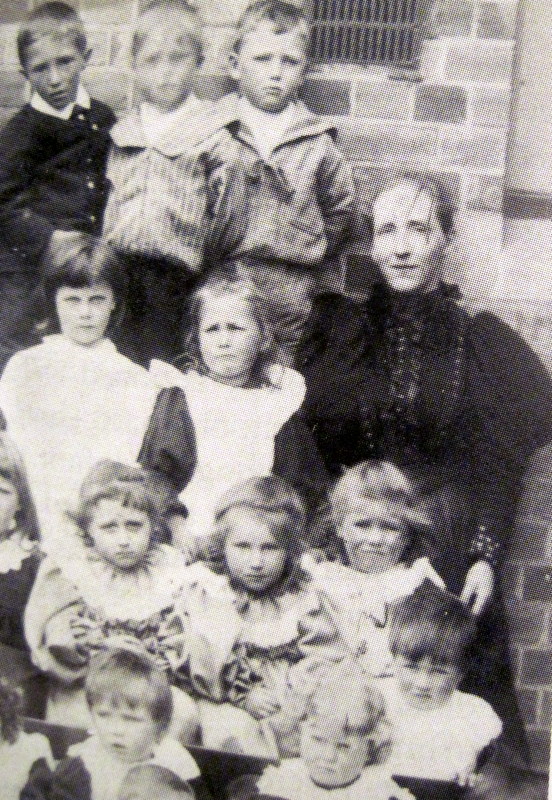
At the other end of the age scale, few men lived beyond 70 years of age in the 19th and early 20th centuries and if they did were still working, even into their 80s. In 1841, John Evans was in his mid seventies and Thomas Barnes was 87 and both were still recorded as labourers. They died aged 81 and 95 respectively. By 1851, Charles Hall (71) was an agricultural labourer and Elizabeth Cook (75) a grocer and both lived into their mid-80s. A few men and women in the 1861 to 1891 censuses were working at over 70 as agricultural labourers.
A non-contributory old age pension was introduced in January 1909, at 5/- per week. The only beneficiary recorded in the 1911 census in Wickhamford was the widow Mary Ann Green, aged 72, who was renting two rooms in Weathervane Cottage. A few other women were over 70 in 1911 - some married, some widowed - but none mentioned receiving the pension on their census forms. The men who would have qualified for a pension at that time were still working – George Pethard (73) was the publican at the Sandys Arms, Wingfield Smith (72) was running the corn mill, Edwin Thorne (73) was an insurance agent and John Mason (73) was a market gardener.
The changing face of the village can be illustrated by looking at the occupants of particular properties through the decades. Some of the oldest extant and unchanged cottages in the village are the conjoined Weathervane Cottage and Old Vicarage. Rev. Drummond had largely rebuilt the latter in 1801 which, at that time, was a hovel occupied by a weaver. It is not possible to identify these cottages from the 1841 census, but in 1851 Weathervane was the home of Richard Howes (33) and his family. He was an agricultural labourer at this time, as was his neighbour William Cook (45) in the Old Vicarage, whose wife, Ann, worked as a dressmaker. Howes was still in Weathervane in 1881, but his occupation description in the censuses changed over the decades. He was still an agricultural labourer in 1861 (a son was a 14-year-old ‘agricultural labourer boy’), but called himself a farmer of 11 acres in 1871 and a market gardener in 1881. He died in 1890, but his widow, Elizabeth was a market gardener in 1891; her grandson, Frederick Cole (10) was a scholar and a lodger, Mary Ann Green, was a charwoman. The property was occupied by market gardeners Decimus Agg in 1901 and Frank Herbert in 1911. It was the latter who rented two rooms to OAP Mrs Green in that year.
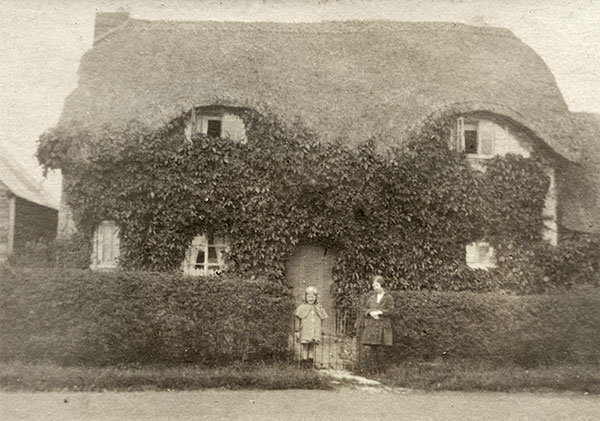
Back in 1861, the Old Vicarage was the home of agricultural labourer George Higgins and then of labourer John Sears in 1871. For the censuses of 1881 to 1911 it was where John Mason lived; he changed his type of work from agricultural labourer in 1881 to market gardener in 1891. He was described as market gardening on his own account in 1901 and as an employer in 1911. His unmarried daughter, 28-year-old Ann, was a gloveress in 1891.
So it was that these two cottages reflected life in Wickhamford over this period, with agricultural labourers, child labourers, market gardeners, a servant, a gloveress, scholars and the first recorded old age pensioner.
Appendix
At the time of the 1921 Census, the occupations shown in Table 2, were as follows:-
Horticultural - 63%. An identical percentage as in 1911.
Agricultural - 10%. This percentage was still declining from its peak in 1881 becuase the village population was increasing but those involved in farming remained fairly constant.
Domestic workers - 8%. Slightly down on the 1911 percentage.
Other work - 19%. A range of occupations were in this general grouping, including two gloveresses.
National Register of 1939
At the outbreak of the Second World War in September 1939 the U.K. Government compiled a list of all inhabitants with their addresses, dates of birth and occupations. This in formation was made available by findmypast in late 2015, but with data for persons born after 1915 largely deleted. The population of Wickhamford at this time was recorded as 388 in 108 households (two appeared to be unoccupied). Although the names and occupations of young men and women aged between about 17 and 24 cannot be accessed, there were about 140 working residents whose occupation details were revealed.
Of these, 46% were involved in market gardening – those working on their own account and those employed by these men. In farming, a further 8% were farmers, farm workers, tractor drivers and men looking after livestock. Thirteen percent of the inhabitants were employed as domestic servants, including nursemaids, gardeners and chauffeurs. A further number, amounting to 17%, were in the retail trade and 6% were professional people. The last group included - Dr Harry Heath of Woodlands, Longdon Hill; two clerical staff for the B.B.C. who were lodging at Elm Farm, Manor Road; Percival Dewey, described as an analytical chemist and author of Manor Cottage, Wickhamford Lane; Sydney Carter, an insurance agent of Shire End, Pitchers Hill and two ‘Wayleave officers’ lodging at Rose Bank, Pitchers Hill. The job of the latter two men was to negotiate with landowners for the route of planned new mains electricity lines across the area. Nancy Pethard, also of Rose Bank, was a Hospital Theatre Sister.
There were two men recorded as being in the Services, but there were probably more amongst the undisclosed names. The two mentioned were Lance Corporal Leslie Field of the Warwickshire Regiment, who lived on Pitchers Hill, and Lt-Commander Clive Loehnis R.N., of Hody’s Place, Manor Road.
Finally there was one occupant, 29-year-old Violet Bennett of Manor Road, whose occupation was given as ‘market gardener and gloveress’. So that trade still lingered on in 1939.
Tom Locke – May 2013 (Appendix added Nov. 2015 and 1921 Census information added in June 2022)
